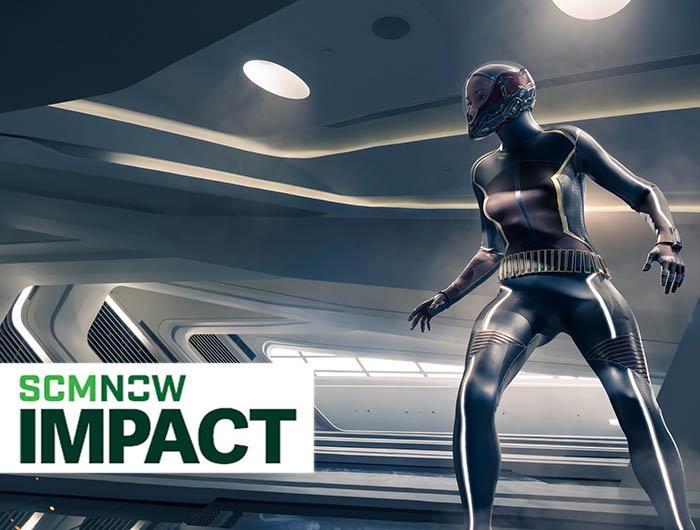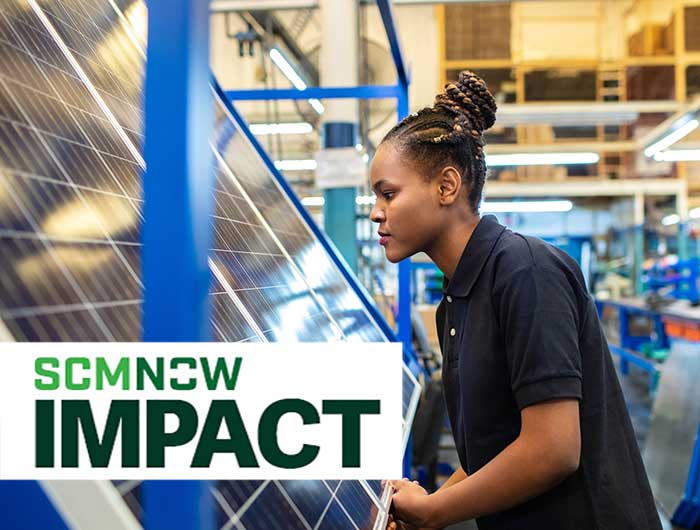This month, we celebrate Earth Day 2023, a time when people around the world demonstrate support for environmental protection. At this important moment, it’s clear that supply chain circularity is arguably the most urgent of all ASCM’s Top 10 Trends in Supply Chain. Earth is continuing to warm; carbon emissions have yet to peak. Although individuals have always had a role in slowing some of the worst effects of climate change, businesses and corporations play a much bigger part in changing the status quo. The future is the circular economy, a system of reusing and regenerating materials and products in a more sustainable way.
“The first advantage of a circular economy is the protection of the environment, reducing waste and the emissions of greenhouse gases, systematizing recycling, and ending planned obsolescence,” says the founders of Solar Impulse Foundation, an organization dedicated to creating solutions to environmental challenges in business. And of course, a major component of the economy is the supply chain.
Supply chain professionals inherently understand how to reduce waste and plan for the end of a product’s life, or planned obsolescence: It’s a crucial part of the job. But the sustainability of the process and its effect on the environment hasn’t always been a consideration. Deborah Dull, vice president of supply chain sustainability at Genpact, explains in her book that the traditional, linear supply chain “relies on planned obsolescence to get more items through our supply chains, into the economy, and consumed.” The circular supply chain, on the other hand, dispenses with the take-make-waste structure of the linear supply chain and refocuses on minimizing waste and maximizing the use of resources.
John Holm, vice president of strategic initiatives at PYXERA Global, a nonprofit organization that works to reinvent how public, private and social interests engage to solve challenges, explains the ecological imperative this way: “We’re stretching our limits within the context of planetary boundaries, whether that’s climate, whether that is extraction and lacking resources and material. We need a new model, a new system to think through what supply chain is. It has to be changed. Circular is a way to do that.”
According to the Ellen McArthur Foundation, the circular economy is based on three principles, driven by design: eliminate waste and pollution, circulate products and materials at their highest value, and regenerate nature. “Energy efficiency and switching to renewable energy is only half the story,” explains the charity committed to creating a circular economy. “It is vital but would only address 55% of global emissions. By adopting the three principles of the circular economy in the products, services and systems we design, we can also start to tackle the remaining 45% of emissions associated with industry, agriculture, and land use that the energy transition can’t address.”
Unfortunately, there’s still a long way to go. In her book, Dull underscores the many reasons why the circular supply chain is the only way forward. Among them: “We are running out of materials. 100 billion tons of materials enter the global economy each year, according to the thinktank Circle Economy. … For the most part, this material comes from the planet. The material is extracted from mines, oil drilling, or forests.” She goes on to point out that only a small proportion, 8.5 billion tons, come from other supply chains.
In a press release Sarah Watt, a vice president with the Gartner Supply Chain practice states, “There is still such a great deal of untapped potential in the circular economy. Supply chain leaders can … reshape their relationship with materials. Instead of losing materials out of the economy in the form of waste, the circular economy helps capture value.”
Holm agrees: “Companies have to reinvent — or better yet, prioritize distribution; not just logistics, but also reverse logistics. It becomes a full-scale circular picture that is really important for companies to begin start solving.”
Designing holistically
But the circular supply chain means different things to different people and companies. The beauty of these sustainable processes isn’t just finding new ways to deal with end waste, it’s more holistic; successful circularity starts all the way back at the beginning of the cycle.
James George, a strategic advisor for the circular economy at PYXERA Global and the founder of environmental consultancy Provocative Human Ltd, explains, “A lot of energy and effort you see … The narrative focuses very downstream. It focuses on what happens and what do we do with the material when it becomes waste. Once the product is created, once it’s no longer wanted, how do we deal with that — how do we recycle it? How do we keep it out of the landfill? How do we potentially upcycle it? Or can we recover some of that material? But of course, that’s dealing with the problem after it’s happened. If we want to really shift the way our business models and our economies operate, we need to come upstream, we need to come all the way back to design. We need to come all the way back to procurement and sourcing. And that inevitably means we need to understand the journey of these materials.”
“The early decisions on materials, production processes and use cases determine most of a product’s environmental impact,” Kevin O’Marah, founder of Zero100, writes for Forbes, noting that 70-80% of a product’s life cycle costs are locked in during design.
Fortunately, numerous organizations are leading the way. Many retailers, for example, have pledged their sustainability goals over the past few years, from fast-fashion megabrand H&M, which collects used clothing in stores, to smaller upstarts including Rothy’s, which makes shoes and bags out of recycled plastic bottles. Farming equipment manufacturer John Deere is transitioning to electric-powered vehicles and sprayers that use less herbicide; and Swedish home furnishings giant IKEA is making a systemic shift in the way they develop products, baking circularity into the process from the beginning.
Considering the financial implications
So how does a company get started? It’s one thing to start a new organization with sustainability in mind; it’s another to retrofit an existing network. When advising supply chain managers and company stakeholders on how to begin implementing a circular supply chain, Holm emphasizes that organizations need to understand its inevitability first, then decide what that means for your company. His advice is to start now. “It’s coming. Get out ahead and look at where the opportunities are around this conversion to what is viewed as circular supply chain. For anyone working in the private sector, the first step is understanding what circularity means within your organization.”
George agrees, saying that the most important question for leaders to ask themselves is, ‘Why?’ “Are you doing it because you’ve been told to, by policy, by legislation, by your investors, by your clients, by your customers? Are you doing it because you’ve spotted an economic opportunity? Why as an organization, as a business, do we care about this?”
He goes on to say that most companies will claim that they’re transitioning to a circular supply chain because it’s the right thing to do for the planet and the people. Even if it sounds good, it’s not necessarily true — and that’s okay, because building a circular supply chain makes economic sense. “Money isn’t a bad reason. Doing the right thing isn’t exclusive of making a profit or [creating] growth. They should be one and the same.” But he clarifies: “This is a different type of growth. It’s a growth that is restorative and regenerative, not consumptive and extractive.”
Furthermore, building a business around a circular supply chain is lucrative, says enterprise application software organization SAP. Circularity means “companies are less dependent on the volatile prices of raw materials, protecting them from geopolitical crises and safeguarding supply chains already threatened by climate change events, such as natural disasters.”
Another advantage is customer loyalty; by renting or leasing products, a sustainability practice that more companies are adopting, customers return to the same retailer over and over, allowing businesses to “learn about customer usage patterns and behaviors and improve customer satisfaction.” Understanding what exactly a customer wants out of a piece of furniture or a pair of shoes or an electronic device inevitably leads to better products, consistent business, and higher profits.
Working together
Individual organizations — or industries — can’t achieve circularity alone. “If companies work together within and across industries to develop circular strategies, they can collectively foster innovation and overcome challenges such as lack of capital, knowledge and tools,” says a team of business leaders at Deloitte, for The Wall Street Journal. George calls this “precompetitive collaboration” and suggests that, if organizations collaborate to redesign how the landscape operates, that will be the commercial differentiator for all those involved.
“You can’t be circular alone," Holm urges. “Circular, by definition, is connection. If you’re not connecting into other groups, other organizations, and sharing that resource data, it’s just a mirage. You’ll never achieve circularity.”



